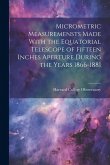Great American astronomy writer Garrett P. Serviss has written this book Pleasure of Telescope, first published in 1901. When this book was published there was an outrage, as on it's cover page picture of a nude goddess shown later it was changed into plain blue cover. It's a classical astronomy book and illustrated guide for amateur astronomers who studies for pleasure and curiosity. Seeing the importance of this book efforts are made to protect, preserve and promote it. In his views telescope is a valuable instrument of knowledge through which things can be observed and discoveries became possible. Since, childhood telescope was his most precious possession. He says it's an instrument generally kept by intelligent and curious people. In an introductory series, he has shown stars and maps more vividly, naked eye visible and visible through telescopes stars are shown differently. Constellation are pointed out by usual symbols and nebulae by a little white circle. The smaller stars are shown by dots and larger by star- shaped figures.
Bitte wählen Sie Ihr Anliegen aus.
Rechnungen
Retourenschein anfordern
Bestellstatus
Storno









